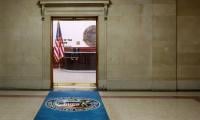Hambantota
Capital suggestion
In 2008, the EXIM Bank of China funded Sri Lanka’s Hambantota Port. In 2010, the port was completed at a cost of $1.3 billion. In 2010, the Mahinda Rajapaksa National Tele Cinema Park was built at a cost of Rs2 billion. In 2011, the Mahinda Rajapaksa International Cricket Stadium was built at a cost of Rs700 million. The Chinese-funded Norochcholai Power Plant was built at the cost of $1.35 billion. The Southern Expressway was built at a cost of Rs776 billion. In 2013, President Rajapaksa spent Rs26 billion on the Mattala Rajapaksa International Airport (near Hambantota).
The Sri Lankan government has also spent Rs15 billion on the Hambantota Sports Zone.
Global shipping companies have refused to use the Hambantota Port because it lacks economic viability. The port now lies abandoned. No one is willing to fly out their filming crews to the Rajapaksa National Tele Cinema; it too lies abandoned. No one has been willing to play cricket at the Mahinda Rajapaksa International Cricket Stadium; it too lies, more or less, abandoned.
The Sri Lankan government has been unable to repay the debt incurred to build the coal-fired Norochcholai Power Plant (the government is now transferring the ownership to the Chinese in a debt-equity swap). The Southern Expressway built at a cost of Rs776 billion has debt-servicing of Rs6.5 billion a year and an income of Rs1 billion. The Sri Lankan government is offering free landing and parking for airlines at the Mattala Rajapaksa International Airport but not a single international airline has agreed to fly to the airport. The airport has been labelled ‘the world’s emptiest international airport’. The Hambantota Sports Zone was built for the 2018 Commonwealth Games, but Sri Lanka lost out to the Gold Coast in Australia.
Governments spend public money on public projects based on four things: political mileage, real or perceived strategic gains, commissions and kickbacks and economic necessity. To be certain, too many projects based on the first three reasons – political mileage, strategic gains and kickbacks – take countries straight into debt traps. The Gwadar Port is based on gaining political mileage (for the civilian leadership). The port is also based on real or perceived strategic gains (for the military).
Hambantota is in the middle of nowhere. So is Gwadar. Between 2009 and 2014, the government of Sri Lanka’s debt tripled (sounds familiar!). The current total debt stands at around $65 billion. And Sri Lanka is now spending 95.4 percent of all government revenue to service her debt (sounds familiar!).
In the first quarter of the current fiscal year, the net revenue receipts of the government of Pakistan amounted to Rs369 billion. For the same period, the federal government owes Rs413 billion in debt-servicing. Imagine: the federal government must borrow for defence, for the running of the civil government, for education and for everything else.
The Hambantota project was all about ‘One Belt One Road’ (sounds familiar!). The Hambantota Port, costing $1.3 billion, makes around $1 million a year or 0.08 percent. According to the Lanka News Web, “Sri Lanka hurtling towards inevitable bankruptcy”.
On August 4, 2016, China and Sri Lanka formed a joint committee to “devise and implement strategies to save the Hambantota project”.
The writer is a columnist based in Islamabad.
Email: farrukh15@hotmail.com Twitter: @saleemfarrukh
-
 Sarah Ferguson Updates Her Plans Now That Andrew’s Eviction Is Nine Days Away
Sarah Ferguson Updates Her Plans Now That Andrew’s Eviction Is Nine Days Away -
 Hailey Bieber Sends Cease And Desist To TikToker
Hailey Bieber Sends Cease And Desist To TikToker -
 Kate Middleton Celebrates England Women's Rugby Stars After World Cup Win
Kate Middleton Celebrates England Women's Rugby Stars After World Cup Win -
 Kris Jenner Dubs Chicago West Her 'sweet Angel' As She Turns Eight
Kris Jenner Dubs Chicago West Her 'sweet Angel' As She Turns Eight -
 Josh Charles Credits Taylor Swift For His, Ethan Hawke’s Moon Person Trophies
Josh Charles Credits Taylor Swift For His, Ethan Hawke’s Moon Person Trophies -
 Jodie Foster Voices Opinion About 'misogyny'
Jodie Foster Voices Opinion About 'misogyny' -
 Virginia Madsen Remembers Late Brother Michael Madsen Six Months After His Death
Virginia Madsen Remembers Late Brother Michael Madsen Six Months After His Death -
 Emilia Clarke Reveals Real Price Of Playing Daenerys In 'Game Of Thrones'
Emilia Clarke Reveals Real Price Of Playing Daenerys In 'Game Of Thrones' -
 Ex-Chicago Mayor Hit With Lawsuit Over Unpaid Credit Card Bills
Ex-Chicago Mayor Hit With Lawsuit Over Unpaid Credit Card Bills -
 Andrew Risks His Relationships With Princess: ‘She’s Supporting The Abused And It’s Festering’
Andrew Risks His Relationships With Princess: ‘She’s Supporting The Abused And It’s Festering’ -
 Harry Styles Unveils New Album After Cryptic Posters Spark Fan Frenzy
Harry Styles Unveils New Album After Cryptic Posters Spark Fan Frenzy -
 Prince Harry Ready To Return To The UK To King Charles But It’ll Depend On How THIS Goes
Prince Harry Ready To Return To The UK To King Charles But It’ll Depend On How THIS Goes -
 Why Isn't King Charles Mourning Death Of His Father's First Cousin?
Why Isn't King Charles Mourning Death Of His Father's First Cousin? -
 Nicole Richie Breaks Silence On Her Daughter's Name Change
Nicole Richie Breaks Silence On Her Daughter's Name Change -
 Truth Behind Chris Noth, Sarah Jessica Parker's Ongoing Feud Revealed
Truth Behind Chris Noth, Sarah Jessica Parker's Ongoing Feud Revealed -
 Baseless Gender Identity Rumors Targeted At Bettijo Hirschi After Todd Bridges Split
Baseless Gender Identity Rumors Targeted At Bettijo Hirschi After Todd Bridges Split



